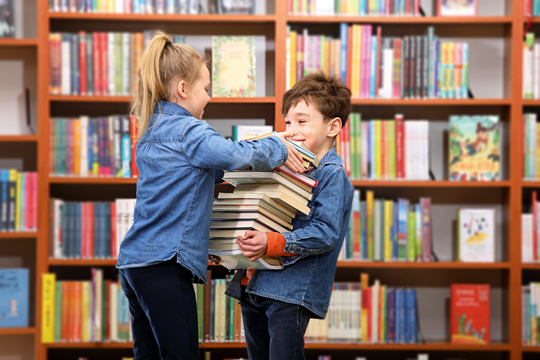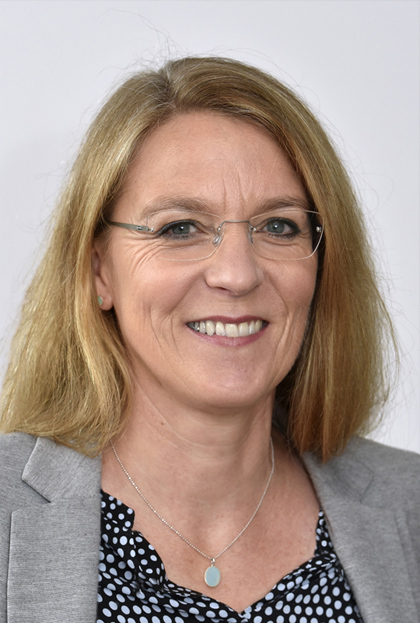Surrounded by Good Friends
Freiburg, Sep 11, 2018
“Kinder brauchen Freiräume (Kids Need Freedom)” is the slogan for this year’s World Children’s Day, which is celebrated on September 20 in Germany. Although this may not be practiced everywhere in the world, in Germany at least no one would contradict UNICEF when it says that only a society that takes children and young adults seriously is really child-friendly and has a sustainable future. However, the idea of giving young people more freedom to develop and be themselves is fairly new. The literature scholar Prof. Dr. Weertje Willms from the Department of German Studies at the University of Freiburg talked to Jürgen Reuß about the history of literature for children and young adults.

Once educators of children, over the years narrators of stories have become more and more their friend. Today, young heroes even often tell their own stories from a first-person point of view. Photo: wip Studio/Fotolia
Prof. Dr. Willms, when looking for children’s literature in book stores today, we are usually faced with a problem: the huge selection. This wasn’t the case 200 years ago, was it?
Weertje Willms: No, it wasn’t. Except for a few medieval texts that taught young people Christian doctrines and virtues, children’s and young adult literature did not emerge until the Enlightenment. The idea that childhood was its own stage of life was closely connected to the development of bourgeois society, when people began thinking that women should stay at home and nurseries were introduced. All of that didn’t exist before.
And did nurseries provide children with the freedom and room to develop like we expect today?
No. Not only were men worried that their wives were at home with nothing to do and that their imagination would be inspired in an unwelcome way by all the books that had become available, but people also thought that what children needed most was to be schooled in the norms of society. That’s why children’s literature had a clearly educational purpose and reflected the educational discourses at the time. Childhood did not exist in its own right yet. It was a time when girls and boys had to learn how to be women and men.
How did that kind of children’s literature look?
Joachim Heinrich Campe was one of the first notable children’s authors and was also interested in education reform. He became famous for his book Robinson der Jüngere (Robinson the Younger), which was published in 1779 and is still available today. It is a loose adaptation of Daniel Defoe’s classic adventure tale, but what is really remarkable is the story that frames the story. It’s about a father sitting with all of his children and reading them this story as a way to impart knowledge and teach them about moral behavior. All books for children in the eighteenth century were educational like this, and they tried to teach young people religious, social and moral behavior. Another famous book by Campe is called Vaeterlicher Rath für meine Tochter (Fatherly Advice for My Daughter) and is about a father teaching his 15-year-old daughter about how she should behave in society.
When could children and young adults start reading books just for fun?
In the 19th century, there were real adventure novels for “mature boys” in which young heroes took to the South Seas or set sail for Africa. These books were of course fun to read, but they also conveyed certain norms of masculinity. There is the strong, courageous, young man who sees himself as part of the “master race” and who learns to conduct himself properly in the colonies and takes over his father’s shipping company in the end. Interestingly, many of these German stories for boys were written by a woman, Sophie Wörishöffer.

“Fantasy and humor have replaced the preachy nursery frame of mind with freedom for young people,” says Weertje Willms about literature for children and young adults since the 1950s. Photo: Thomas Kunz
A woman was penning these male fantasies?
Yes, but she was following the publisher’s guidelines. She was a poor widow with an illegitimate son, and she earned the title of the “Karl May of Altona” [Karl May is a famous German author of adventure tales]. The books were very successful, although they cost the equivalent of €90 per novel today. Her name was shortened to S. Wörishöffer on the title page as well in order to not to break the illusion of a male author.
And what did girls read?
Girls mainly read books like Emmy von Rhoden’s Der Trotzkopf (Stubborn as a Mule) and Else Ury’s Nesthäkchen (Baby of the Family) series. In the late 19th century, there were also books written for teenage girls that were inspired by the fight for women’s rights. However, these were eventually forgotten, while books like Der Trotzkopf live on.
When did the current understanding of good literature for children and young adults begin to take hold?
During the 19th century, there was both a conservative as well as an innovative camp. Forerunners for the latter were fairy tales from Romanticism or such exceptional books as Lewis Caroll’s Alice in Wonderland. In the early 20th century, educational and aesthetically innovative books began to be very popular. The breakthrough in Germany was Erich Kästner’s Emil und die Detektive (Emil and the Detectives) from 1929. After the Nazi era, this was followed by Astrid Lindgren’s Pippi Longstocking, which was published in Sweden in 1945 and came out in West Germany in 1949. From the 1950s on, we had authors like Otfried Preußler, James Krüss, and Michael Ende, who wrote “literature for childhood autonomy.”
From then on, literature gave children more freedom to think and imagine?
The success of these books demonstrates how ideas about childhood have changed over the years. The narrator has evolved from an educator of children to their friend, and today young heroes often tell their own stories from a first-person point of view. Although the conservative camp is still clearly represented on the book market, fantasy and humor have replaced the preachy nursery frame of mind with freedom for young people to develop in a protected environment – at least in good books for young readers.

